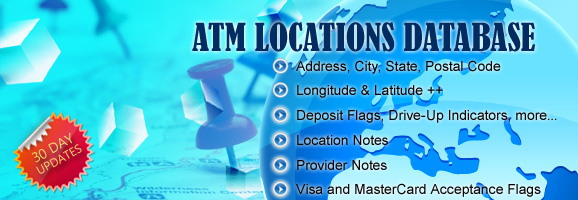ROI Explained
In the financial world, ROI simply means Return On Investment. ROI is the most commonly used method that business organizations use to determine the feasibility of a particular investment opportunity presented to them. It basically means the possible annual return of money invested on a business deal or a project. ROI is very much similar to the calculations that are used on a bank account's interest rate and on most stock investment profits. ROI is quite easy to understand, and this must be the reason why a lot of people feel comfortable in using it as a model for computing their possible earnings.
 As implied earlier, ROI is a very straightforward tool used in measuring the financial return of a business project. It is calculated by getting the number of times the net benefits had gained, minus all the costs involved, as compared to price of the initial investment. This is the most common mathematical definition of an ROI, although a number of other formulas had emerged over time. And this is mainly due to the fact that every business has unique financial inclinations and has different factors to consider. The computation for ROI can be tailored in such as way it answers what a certain industry or company requires.
As implied earlier, ROI is a very straightforward tool used in measuring the financial return of a business project. It is calculated by getting the number of times the net benefits had gained, minus all the costs involved, as compared to price of the initial investment. This is the most common mathematical definition of an ROI, although a number of other formulas had emerged over time. And this is mainly due to the fact that every business has unique financial inclinations and has different factors to consider. The computation for ROI can be tailored in such as way it answers what a certain industry or company requires.
![]()
There are several key points that have to be understood so that ROI can be fully explained. These are:
Net Profit
Net profit corresponds to the project's total profits less all the costs that are associated to generate the said profits or benefits. Net profit is oftentimes referred to as net costs. For some companies, it is important to include taxes, depreciation value, and other similar things to the computation of net profits. On the other hand, some don't opt to include them because of their ever-changing values that could only affect the computation in a negative manner. This is an example of tailor-fitting the computation of ROI for every business. Net profit is actually the projected income from a business endeavor. From it, ROI can then be computed.
Total Costs
Costs are another factor. Costs are actually the denominator of an ROI equation. If net profits are the numerator, then its value has to be divided by the costs accrued by the investment to arrive at an accurate ROI value. Again, computing for the total cost is subject to the requirements of the company. Some do it by considering only the capital expenditures within the first year, while others include all periodic or recurring costs. Examples of recurring costs are maintenance requirements and sometimes, even software and hardware upgrades.
Period
Period corresponds to time. Arriving at an ROI value has to be quantified as to how long the return is supposed to be achieved. Is the return expected to arrive on a yearly basis? Or is it going to be quarterly? The most common model used by companies is of course, the yearly computation. But a lot also consider short-term projects in order for them to better envision the yields a certain investment may bring. There are cases though, that big-ticket projects require more than a year for an ROI to be realized. And to answer this, a specific model has to be formulated to determine the ROI's accurate value.
The Differences in Terminology
 While the computation for ROI is generally the same, in some cases, the equation is modified and the terms used are quite different than what it is more commonly known. Net profits, or net benefits, for example, can be termed as the investment package's future income or simply its projected earnings. Some other financial experts, on the other hand, may interpret these costs as invested assets and capitals. Either the case, the value of ROI remains the same. And that's because the value used remains the identical, regardless of the accepted change in the way the terms are called.
While the computation for ROI is generally the same, in some cases, the equation is modified and the terms used are quite different than what it is more commonly known. Net profits, or net benefits, for example, can be termed as the investment package's future income or simply its projected earnings. Some other financial experts, on the other hand, may interpret these costs as invested assets and capitals. Either the case, the value of ROI remains the same. And that's because the value used remains the identical, regardless of the accepted change in the way the terms are called.
With all these said, ROI or return on investment could be applied in all types of business, no matter how big or small it is. In fact, it is actually used as a basis of business owners to determine whether or not they should continue on investing their time and money on a certain project. Loaning institutions uses the ROI model to estimate their profits they would gain on financing another person's or a company's monetary requirement. And on a small business's point of view, the computation for ROI can be used in analyzing whether buying goods for inventory purposes will give them an income in the form of sales in the next year.
Nowadays, ROI is also widely utilized in online marketing. In fact, the ROI rule is best applied on pay per click advertising that most website owners integrate in their respective websites to make them more profitable. Some webmasters adapt the ROI model in deciding whether or not they should participate in such types of advertising strategy to promote their online stores.
And so it is a must for every businessperson to determine a project's ROI before they involve themselves in it. This ensures them of a smooth business operation, with the end goal of generating income from it. If ROI is not rightfully considered, the whole business deal becomes a risk, and it could very well be big risk at that. It also pays to know the need or the frequency by which you need to recalculate and work something out to protect the project's projected ROI.
ROI Tools and Resources
Always Be Tracking!
 Business deals can really be tricky. You could be well gaining on one second and failing on the next. In relation to the risks associated to your chosen business endeavor, you should regularly check how your ROI is coming to be. Remember, the values of ROI are not always fixed. It may change from time to time, depending upon the factors that directly affect the business deal. The more important thing here is that, as a businessman, you should be well aware of the risks and the gains associated to a particular investment you are looking at. And by weighing the gains against the risks, you will get an estimated ROI value, which in turn, could help you decide whether you should push through with the deal or not.
Business deals can really be tricky. You could be well gaining on one second and failing on the next. In relation to the risks associated to your chosen business endeavor, you should regularly check how your ROI is coming to be. Remember, the values of ROI are not always fixed. It may change from time to time, depending upon the factors that directly affect the business deal. The more important thing here is that, as a businessman, you should be well aware of the risks and the gains associated to a particular investment you are looking at. And by weighing the gains against the risks, you will get an estimated ROI value, which in turn, could help you decide whether you should push through with the deal or not.
ROI Tracking Helpers
No Comments
There are currently no comments on file, be the first to add yours!







 Are you Looking for Executive Level Contacts with Direct Email Contact Addresses? DigiBits Media is offering a
Are you Looking for Executive Level Contacts with Direct Email Contact Addresses? DigiBits Media is offering a 
